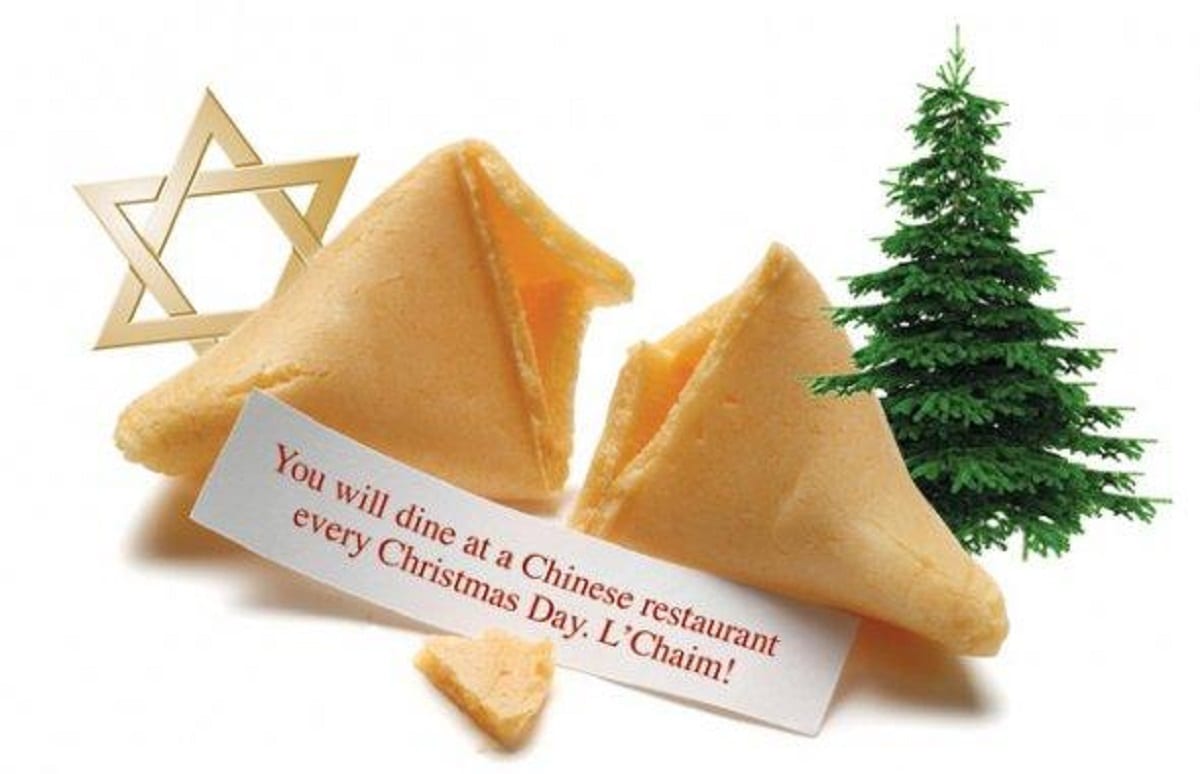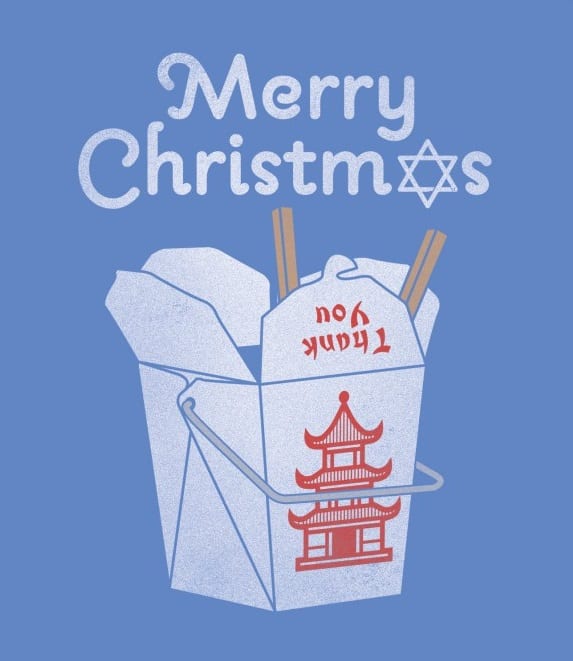For those who celebrate, Christmas might conjure up images of sleigh bells, snow, and dancing sugar plum fairies. But for Jews, the holiday is just as likely to prompt mouthwatering visions of wontons, Kung Pao chicken, and other Chinese dishes. Jewish people eating Chinese food on Christmas is an image that has become so pervasive, it has even made it to the federal government, when it was mentioned during the confirmation hearings for Supreme Court Justice Elena Kagan. But Jews and Chinese food, especially on Christmas, is a stereotype that is actually based on truth, and on the historical relationship between the two immigrant groups.
This Jewish culinary choice for Christmas is not a new phenomenon. The first written reference to Jews eating Chinese food on Christmas dates to 1935, when The New York Times reported that a man named Eng Shee Chuck brought Chinese food to the Jewish Children’s Home in Newark, New Jersey on Christmas Day. But Jews had already been eating in Chinese restaurants since the end of the 19th century; in 1899 an article in the American Jewish Journal took Jews to task for eating at non-kosher restaurants, and singled out Chinese restaurants specifically.

It was no coincidence that American Jews were drawn to Chinese cuisine so soon after their arrival in the United States. In many ways, the Jewish immigrants identified with their Chinese neighbors. Both groups lived in the same area—the Jews on the Lower East Side, and the Chinese immigrants in neighboring Chinatown—and were attempting to make a new life for themselves in America. Additionally, both were groups of non-Christian immigrants, which in many ways rendered them fundamentally “other” within their new home.
As Jewish and Chinese immigrants discovered each other and began to interact, Jews who were seeking to assimilate more fully into American life found that Chinese food offered a means of transitioning from traditional Jewish practice. For Jews looking to relax their standards when it came to keeping kosher, Chinese food offered a number of advantages. Although pork and shellfish were present in at least some of the food, the non-kosher elements were not blatantly obvious, and were usually hidden within egg rolls or sauces. This lent an air of plausible deniability to those who, although they no longer wished to keep kosher, were not yet willing to eat food that was overtly not kosher. Additionally, in contrast to the food of the Irish and Italian immigrants who shared the Lower East Side with Jewish immigrants, Chinese food did not use dairy products, which meant that eating it would not break the taboo of mixing meat and dairy. These features of Chinese food allowed those who were beginning to break through the boundaries of Jewish observance to maintain the illusion that they were not thoroughly abandoning their traditional practices.

In addition to the food itself, Chinese restaurants welcomed anyone who came. While other ethnic restaurants tended to be geared exclusively towards their specific groups, Chinese restaurants were willing to welcome anyone who came, whether they were fellow Chinese immigrants, a Christian New Yorker who had lived in the city for a century, or a Jewish immigrant who had recently arrived from Ellis Island. And because the Chinese immigrants were not Christians, Chinese restaurants were nearly always open, including on Sundays, as well as other days during the year when the majority of businesses were closed—such as Christmas. Christmas, therefore, became a day in which Jews who had a precious day off of work could go eat at one of the few places that remained open, among fellow non-Christians, where they were sure to be welcomed.
The tradition of Chinese food on Christmas has endured through the years. On Christmas Day it can be nearly impossible for Jews—or anyone, for that matter—to get a reservation at Chinese restaurants, and delivery might take hours. Additionally, in areas with larger Jewish populations there are even kosher Chinese restaurants, so those who wish to mark Christmas “the Jewish way” no longer have to choose between traditional Jewish observance and enjoying Chinese food.
Perhaps this custom has persisted because Jews still need a place where they will be welcomed (and that is open) on Christmas. Being Jewish during the Christmas season can be alienating, and a reminder that as much as American Jews have succeeded in making the United States a home, once a year, at least, they are still other. Gathering around Chinese food on Christmas, whether at a restaurant or at home with takeout, has become a way for Jews to celebrate and assert their Jewish identity, with cuisine that reminds them that they are welcome any day of the year.